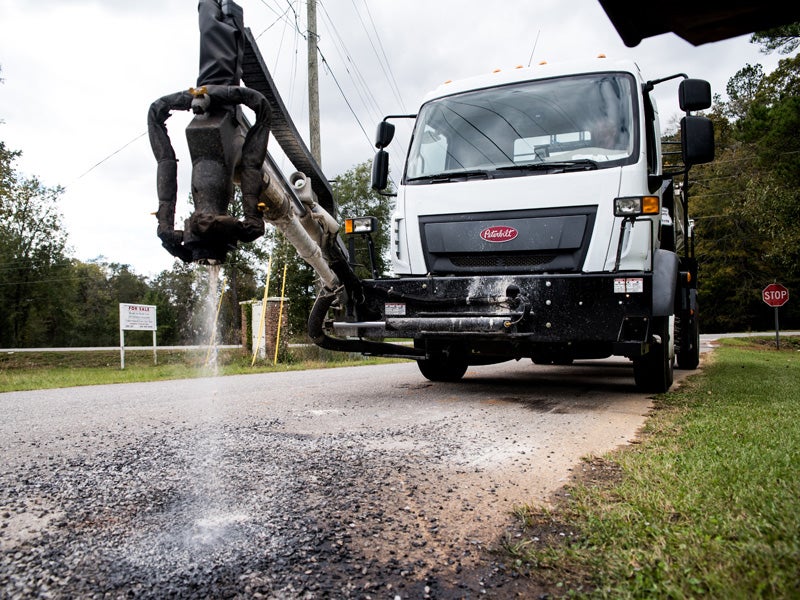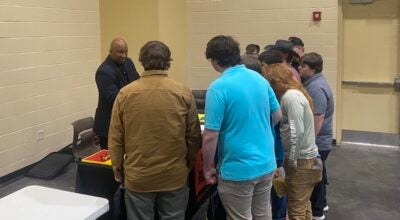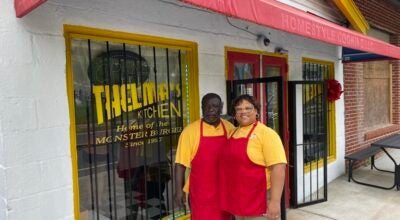No simple solution to county’s road issues
Published 5:25 pm Monday, October 30, 2017

- County crews work to patch a damaged section of road recently. Limited funding means the county must prioritize heavily damaged and high traffic roadways. (Photo by Keith McCoy)
Roads have been a major part of the discussion in Chilton County for quite some time, but does anybody know the reasons behind why a clear solution has yet to be found?
There are many factors that have made the road dilemma a recurring theme for decades.
At the end of the day, it all comes down to money and the lack of it by the county.
Chilton County has 600 miles of paved roads, and 400 miles of dirt roads.
However, even when comparing two paved roads, the cost may not be reflective between the two.
An example is that Chilton County 29 cost about $180,000 a mile to resurface, while County Road 48 cost roughly $220,000 a mile for its resurface.
The cost difference can be factored by the road conditions and whether it needed to be milled or rebased.
That puts the average cost for resurfacing a road with asphalt at around $200,000 per mile.
“Not every road needs asphalt,” Commissioner Joseph Parnell said. “We have a lot of roads in this county that have very light traffic on them. Chip seal is perfectly adequate for those roads.”
Chip sealing is a cheaper alternative to asphalt.
According to County Engineer Tony Wearren, about 80 percent of the roads in the county could be chip sealed as a solution. However, the chip seal is placed on top the road, so if there was a previous rut in the road, it will still exist after the chip seal is applied.
Follow the money
The main question is not about paving the roads themselves, but how to get the money needed to pay for that process to take place.
That is where things get a little bumpy.
Property taxes are one of the first things associated with the road department, but it is surprising to find out how little of that amount actually makes its way back to help service the county roads.
16.6 percent of the money paid as property taxes goes into the county’s general fund, where it is then divvied up among the various departments.
In the current tax structure, 4 percent of everything that is purchased goes to the state of Alabama, no matter where in the state the purchase is made.
If you are outside the city limits of any of the municipalities, you are going to pay 6 percent with two percent of that coming to the county.
That two percent is broken down even further, with one percent going to the Chilton County Board of Education and 1 percent designated for St. Vincent’s Chilton. None of that 6 percent sales tax ends up benefiting the county departments in any way.
Taxes on purchases made in any of the cities or towns in Chilton County will vary depending on the municipality.
Examples of this include paying 9 percent in Clanton and 10 percent in Jemison, but the county still sees none of the taxes brought in from those municipalities.
Paying for the past
Adding to the financial difficulties is the $6 million borrowed in 2005 by the county commission at the time for road improvements, and the current commission is still making payments on that amount at a rate of $500,000 a year.
To make matters worse, the county paid $2 million in interest on it.
“That money was needed 10 years ago, but what they did was they wound up with $2 million less in the long term, because they went out and borrowed it,” Parnell said. “There is a reason to borrow money in my mind, and that’s if you don’t have the appropriation for your max on an 80/20 split. If you had to borrow $2 million to get $10 million, I could see paying the interest on that.”
The loan is set to be paid off in 2021.
The money was borrowed six months before Commission Chairman Allen Caton came on board and about two years before Tony Wearren became county engineer.
“They went out and borrowed the money to make a difference, but what they’ve done is cost the road department the ability to move forward for 10 years,” Parnell said.
Revenue equals roads
There are taxes other than the property tax that would seem to make a difference, but have very little impact when it comes to road maitenence.
The formula used for gas tax is one of them. It is collected by the state and can be quite complex.
Of all that is collected, the state gets all of the tax on diesel purchased and 60 percent of all the tax on gasoline.
The 40 percent leftover is divided two ways, with slightly more than half of that 40 percent divided equally among the counties and the rest of it by population.
According to Parnell, that leaves Jefferson, Mobile and Montgomery Counties getting most of the gas tax revenue.
With the state taking such a large portion of money, it limits the less populated counties in Alabama.
According to Wearren, Mobile County has about the same amount of miles in its road system as Chilton County, but it has about a 3:1 ratio of miles per employee.
Wearren posed the example using the gas tax formula: If somebody bought $5,000 of gas in one year, which is equivalent to 2,500 gallons at $2 per gallon, the average person statewide is paying less than $4 a year to Chilton County from the gas tax.
Proposals of a county sales tax and business licenses have been put on the ballet in the past, but have not gained enough votes on each occasion.
Time for a tax?
The latest attempt came in 2009 when then-commissioner Red Turnipseed helped orchestrate an effort to put a 1-cent county sales tax back on the ballet.
According to Caton, town hall meetings were held all throughout the county and in each municipality, but very few people attended the meetings and it never made a spot on the ballet.
Even at a low-end estimated cost of $125,000 a mile, it would require an estimated $55 million to fix the county’s roads. That involves hiring Wiregrass Construction Company to pave the roads and does not include dirt roads or standard maintenance.
According to Parnell, a 1 percent sales tax would generate about $375,000 a month. In that scenario, it would take 146 months or slightly more than 12 years to pave the roads.
The average road has a 15-year lifespan, so it would take roughly that same amount time to pave the roads with help from a 1-cent gas tax that was designated for roads.
“There is not a man that has been elected up here, whose total goal is not to improve the quality of life in this county,” Parnell said. “You sit out in the public and you look at the commission and think ‘I can fix that,’ then you get here and you realize it’s a little bigger problem than what you thought it was.”
The example given by Parnell was a minimum scenario that factored in both high-traffic and residential roads.
“If you live on County Road 30, that road is just as important to everyone that lives on it as County Road 37 is to all the people that come through there,” Parnell said.
Something that should not be overlooked when discussing roads is having an understanding of who is in charge of which roads.
The cities and towns are responsible for maintaining the roads in its jurisdiction, while the county is only in charge of the county roads.
City and county governments are separate entities, and that includes resurfacing and everything else that accompanies road conditions.
Chilton County does not have a county sales tax to lean on, and the only help that it can rely on each year toward roads is a portion of the property sales tax money.
According to Commissioner Steve Langston, finding ways to create more revenue should be a top priority, because that is the only way to make sure the recurring problems get solved.
“If it was as simple as stroking a check, it would already have been done,” Commissioner Steve Langston said.
Introducing taxes are always a touchy situation and not something the commission wants to do, but it may be near the point where there are limited options to choose from as a way of bringing in revenue, Parnell said.
“I’m anti-tax, but I’m to the point where I’ve realized that we cannot fix this without some money,” Parnell said.






